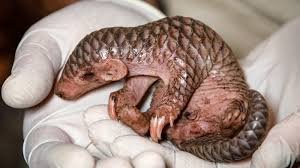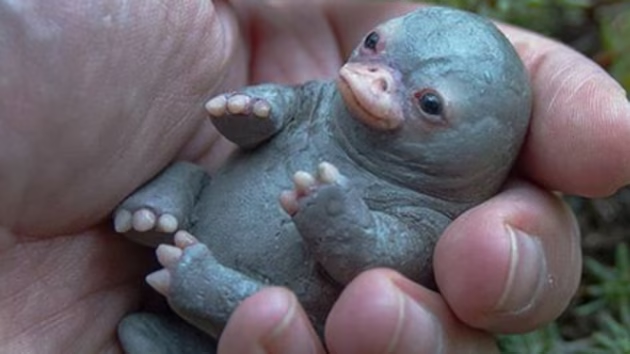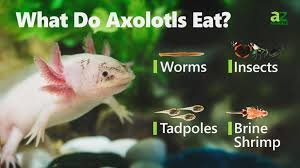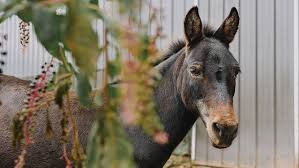
baby pangolin
The baby pangolin is one of the most unusual and enchanting newborns in the mammal world. Often called a “scaly anteater,” the pangolin is famous for its armor-like scales and secretive lifestyle. When a baby pangolin is born, it already carries a soft version of these scales, which gradually harden as it grows. These remarkable creatures, native to Africa and Asia, play a vital role in ecosystems by controlling insect populations. Sadly, pangolins are also among the most trafficked mammals on Earth, making the birth of every baby pangolin an important symbol of survival and hope.
Origins and Classification
Pangolins belong to the order Pholidota, with eight recognized species across Africa and Asia. They are unique among mammals because their bodies are covered in protective keratin scales, much like human fingernails. Baby pangolins inherit this defining feature, though at birth their scales are soft and pale. Pangolins are solitary animals, and births are usually singular, though twins are occasionally reported. Each baby pangolin contributes to the survival of species that face immense pressure from poaching and habitat destruction.
Birth and Early Life
The gestation period for pangolins varies between species, ranging from 70 to 150 days. A baby pangolin, also called a pangopup, is born small and vulnerable, typically weighing between 80 to 450 grams depending on the species. Unlike most mammals, pangolins give birth in burrows or hidden tree hollows to ensure safety. Newborns are pink and soft, with fragile scales that gradually harden within a few days. Within hours of birth, a baby pangolin clings tightly to its mother, often riding on her tail as she moves around in search of food. This early bond is essential for survival.
Physical Appearance of Baby Pangolins
A baby pangolin’s body is covered in overlapping scales made of keratin, though at birth these are soft and pliable. As the pangopup grows, the scales darken and harden, forming the iconic armor-like shield. Their tails are strong and flexible, helping them cling to their mothers. Small claws begin to develop early, which later allow them to dig burrows and tear open termite mounds. Their tiny faces are marked by long, narrow snouts and no visible teeth. Instead, baby pangolins will eventually rely on their tongues, which can grow longer than their bodies in adulthood.
Feeding and Diet
In the first three to four months, baby pangolins rely exclusively on their mother’s milk. The mother nurses the pangopup in the burrow and occasionally carries it during foraging trips. By around one month of age, the baby begins to lick at ants and termites, mimicking the mother’s feeding behavior. As it grows, it gradually transitions to a full insectivorous diet, including ants, termites, and their larvae. Baby pangolins have an incredibly long sticky tongue, which allows them to capture insects efficiently. Their stomachs contain keratinous spines and stones that help grind food, compensating for their lack of teeth.
Social Behavior and Maternal Bond
The bond between a baby pangolin and its mother is deep and highly protective. Pangolins are generally solitary, so the mother-infant pair forms the only significant social unit in the early months. The pangopup rides on its mother’s back or tail, clinging tightly as she forages. If threatened, the mother curls around the baby, shielding it with her hardened scales. This defensive behavior ensures the survival of the young, which cannot protect itself effectively in the first weeks of life. Unlike herd animals, pangolins do not form larger family groups, making the mother’s role in rearing the infant even more critical.
Growth and Development Milestones
Baby pangolins grow rapidly during the first year of life. Within a few weeks, their scales harden enough to provide substantial protection. By two to three months, they begin eating solid food alongside milk. Weaning usually occurs at around three to five months, depending on the species. By six months, a young pangolin may start foraging independently, though it often stays close to its mother for protection and learning. Full independence is typically reached around one year of age. In captivity, where observation is easier, researchers have documented playful behaviors such as climbing and digging practice in pangopups.
Baby Pangolins in the Wild vs. Captivity
Studying baby pangolins in the wild is extremely difficult because of their secretive nocturnal habits and remote habitats. Most detailed insights into their growth and diet come from pangolins rescued from illegal trafficking or raised in sanctuaries. Unfortunately, pangolins do not breed easily in captivity, and raising pangopups requires specialized care. Despite the challenges, rehabilitation centers and wildlife sanctuaries in Africa and Asia have had some success in nurturing orphaned baby pangolins. Organizations like the Pangolin Conservation are dedicated to rescuing, rehabilitating, and releasing pangolins back into their natural habitats, making every healthy pangopup a small victory against extinction.
Threats to Baby Pangolins
While pangolins are born with natural armor, this does not fully protect them in early life. Baby pangolins face threats from predators such as big cats and birds of prey. However, the greatest danger comes from humans. Pangolins are hunted for their scales, which are used in traditional medicine, and for their meat, considered a delicacy in some cultures. When mothers are captured, baby pangolins are often taken and sold illegally. Their survival rate in illegal trade is extremely low due to poor handling and lack of knowledge about their dietary needs.
Conservation Efforts
The plight of pangolins has led to international conservation efforts. All eight species of pangolins are now protected under CITES Appendix I, which bans international trade. Conservation organizations focus on anti-poaching patrols, habitat protection, and education campaigns to reduce demand for pangolin products. Sanctuaries and zoos also play a role by rescuing baby pangolins and attempting captive breeding programs. Resources like Save Pangolins provide valuable information on conservation status and ways for the public to help. Each rescued pangopup represents hope for the survival of these critically endangered mammals.
Symbolism and Cultural Significance
In many cultures, pangolins are considered mysterious and symbolic animals. Their defensive curl is often seen as a symbol of protection and resilience. Baby pangolins, with their delicate scales and dependence on maternal care, symbolize innocence and vulnerability. In global conservation campaigns, the image of a baby pangolin often serves as a powerful reminder of the urgency to protect Earth’s lesser-known creatures before it is too late.
Fascinating Facts About Baby Pangolins
- A baby pangolin is called a pangopup.
- Pangopups are born with soft, pale scales that harden within a few days.
- They ride on their mother’s tails during the first months of life.
- Baby pangolins nurse for up to five months before fully weaning.
- Despite their small size, pangopups can cling tightly with their tails and claws.
The Future of Baby Pangolins
The future of baby pangolins depends on global awareness and action against poaching and trafficking. Protecting their habitats, enforcing wildlife trade bans, and supporting conservation organizations are essential steps. Baby pangolins represent the fragile beginning of life for one of the planet’s most endangered mammals. Each birth, whether in the wild or captivity, is a symbol of resilience in the face of overwhelming challenges.
Conclusion
The baby pangolin is a rare and remarkable newborn, embodying both the vulnerability and resilience of its species. From its birth with soft scales to its dependence on maternal protection, the pangopup’s early life is a story of survival in some of the world’s most threatened ecosystems. While dangers such as poaching and habitat loss loom large, conservation efforts provide hope. By learning about and appreciating baby pangolins, we take an important step toward protecting these unique creatures for generations to come.






